The Avebury stone circles and henge are part of the UNESCO World Heritage Site: Stonehenge, Avebury and Associated Sites. The Avebury stone circles and henge are loated around the tiny village of Avebury in Wiltshire in Great Britain. The Avebury stone circles and henge are about 5000 years old. Avebury is one of the largest megalithic sites in Europe. Avebury consists of two inner stone circles and a larger outer stone circle, surrounded by a ditch and an earthwork bank. The outer circle of Avebury is the largest known stone circle in the world, even larger than Stonehenge. Only 27 stones of the outer circle of Avebury have survived. The Swindon Stone is the largest stone of the Avebury stone circles. All the stones of Avebury are natural blocks of sarsen stone. The West Kennet Avenue connects the Avebury stone circles and henge and the Sanctuary on Overton Hill. The village of Avebury is surrounded by the Avebury stone circles and henge. Stonehenge, Avebury and Associated Sites, including Silbury Hill and the West Kennet Avenue, were declared a UNESCO World Heritage in 1986. World Heritage Art: Stone Circle
www.werelderfgoedfotos.nl © Copyright World Heritage Photos Classic Car Road Trip
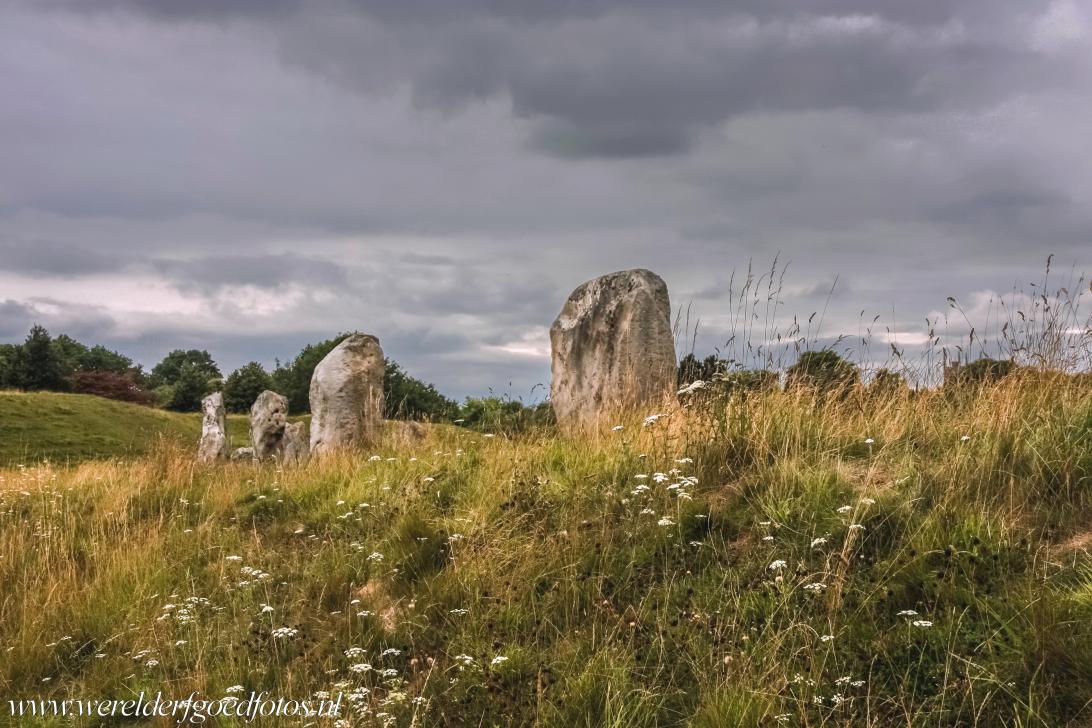
The megalithic monument of Avebury is about 5000 years old. Avebury consists of two inner stone circles and a larger outer stone circle, surrounded by a ditch and an earthwork bank, the henge. An unique square megalithic monument has been discovered inside the henge in 2017. Avebury is part of the UNESCO World Heritage: Stonehenge, Avebury and Associated Sites.

The megalithic monument of Avebury is about 5000 years old. Avebury consists of two inner stone circles and a larger outer stone circle, surrounded by a ditch and an earthwork bank, the henge. An unique square megalithic monument has been discovered inside the henge in 2017. Avebury is part of the UNESCO World Heritage: Stonehenge, Avebury and Associated Sites.
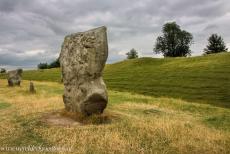
Avebury Stone Circles and Henge: Just inside the ditch are the remains of the outer circle. All the stones of Avebury are natural blocks of sarsen stone, they have not been dressed. It seems very likely that the prehistoric builders of the Avebury Stone Circles deliberately selected the stones for their shape, tall pillar-like stones with vertical sides and broad diamond-shape stones.
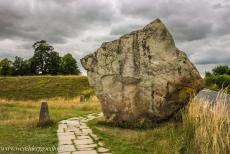
Avebury Stone Circles and Henge: The Swindon Stone is the heaviest stone at Avebury. Pairs of large stones were placed flanking the entrances into the henge and the Avebury Stone Circles. Two of them survive at the southern entrance, the enormous Swindon Stone by the side of the Swindon road is the survivor of a pair of stones at the northern entrance.
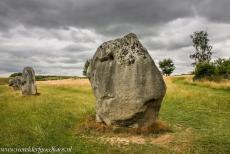
West Kennet Avenue leads from the southern entrance of the Avebury Stone Circles and henge to the Sanctuary on Overton Hill. The Beckhampton Avenue started at the western entrance of Avebury. The Avebury stone circles and henge are situated around the small village of Avebury. Stonehenge, Avebury and Associated Sites were declared a UNESCO World Heritage in 1986.
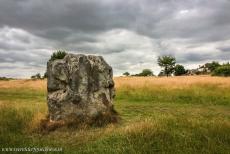
Avebury Stone Circles and Henge: One of the huge standing stones of the inner stone circle. The northern inner circle was 98 metres in diameter, the circle contained thirty standing stones, only four have survived. At the centre of the northern inner circle of Avebury was the so-called Cove, three huge standing stones. Nowadays, only two of them are standing.
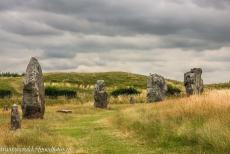
Stonehenge, Avebury and Associated Sites: Avebury consists of three stone circles, a large outer stone circle and two smaller inner stone circles, surrounded by a ditch and an earthwork bank, the henge. Avebury is part of the UNESCO World Heritage: Stonehenge, Avebury and Associated Sites. The UNESCO World Heritage was inscribed on the UNESCO World Heritage List in 1986.
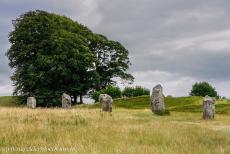
The Avebury Stone Circles and henge are about 5000 years old and one of the largest megalithic sites in Europe. The great outer stone circle of Avebury is the largest known stone circle in the world. The outer circle consisted of about hundred standing stones originally. Inside the outer circle are the remains of several settings of stones.
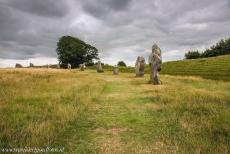
Avebury Stone Circles and Henge: Several standing stones of the great outer stone circle, on the left hand side the circular ditch. Only twenty-seven stones of the outer circle have survived, the positions of the missing stones are marked with small concrete pillars. Between the outer circle and the circular ditch, the excavators found the stump of a solitary stone, called the Ring Stone.
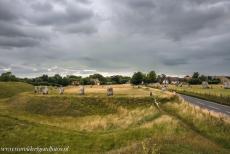
Avebury Stone Circles and Henge: The outer circle of Avebury is the largest known stone circle in the world. The village of Avebury is surrounded by the Avebury Stone Circles, the henge and the earthworks consisting of an inner ditch and the outer banks. The village of Avebury is situated in Wiltshire, in southwest England.
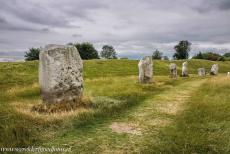
Avebury Stone Circles and Henge: At the centre of the southern inner circle was a huge upright stone. The southern circle of contained thirty-two standing stones, only five have survived, the positions of the others are marked with concrete pillars. The southerh inner circle was slightly larger than the northern inner circle.
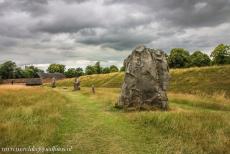
Avebury Stone Circles and henge: A part of the earthwork bank and the Outer Stone Circle of Avebury. Avebury consists of two inner stone circles and a larger outer stone circle, surrounded by a ditch and an earthwork bank. The exact purpose of Avebury is still a mystery. Avebury was constructed over many centuries from about 2850 BC until about 2200 BC.
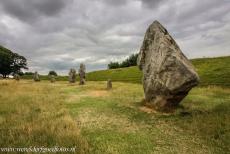
Stone Circles of Avebury and Henge: Nowadays, only 27 stones of the outer Stone Circle of Avebury have survived. It is estimated that the Stone Circles of Avebury consisted of 247 huge standing stones. Stonehenge, Avebury and associated sites together form a World Heritage Site and were inscribed on the UNESCO World Heritage List in 1986.
